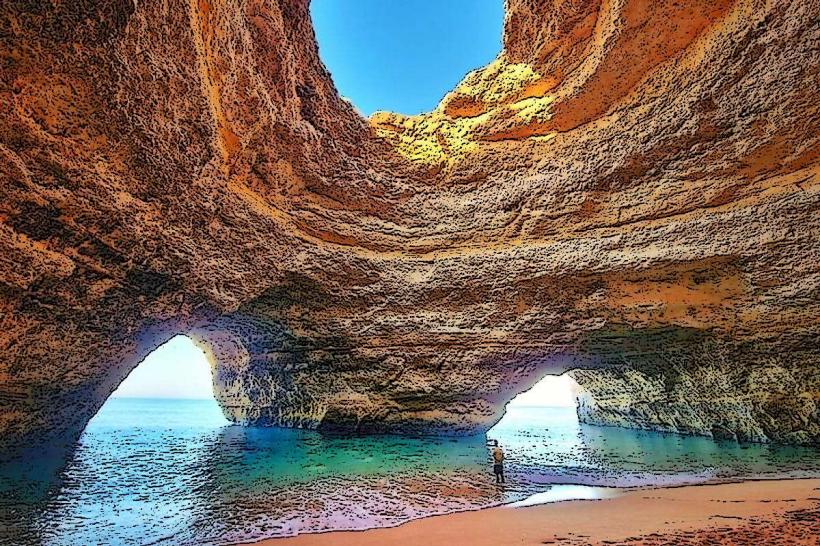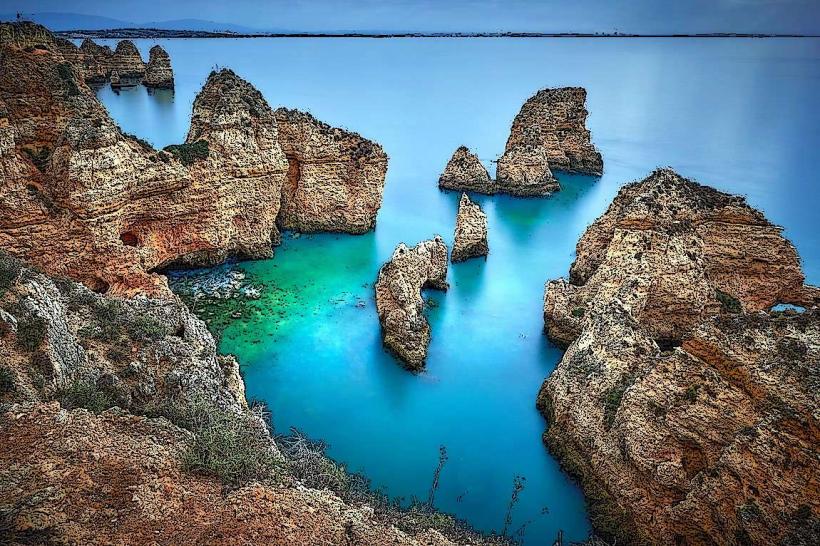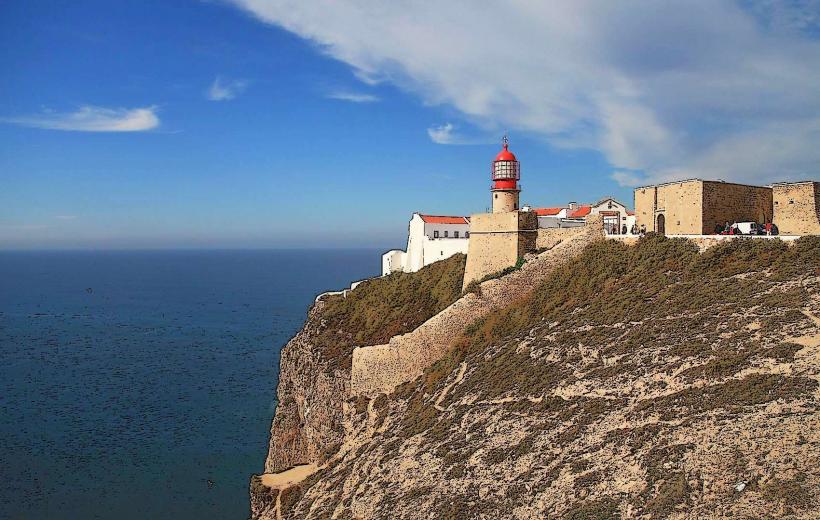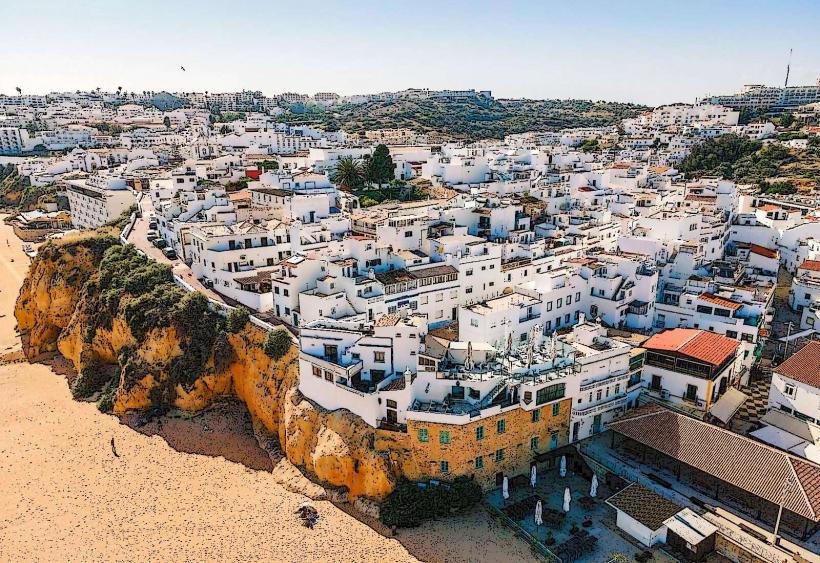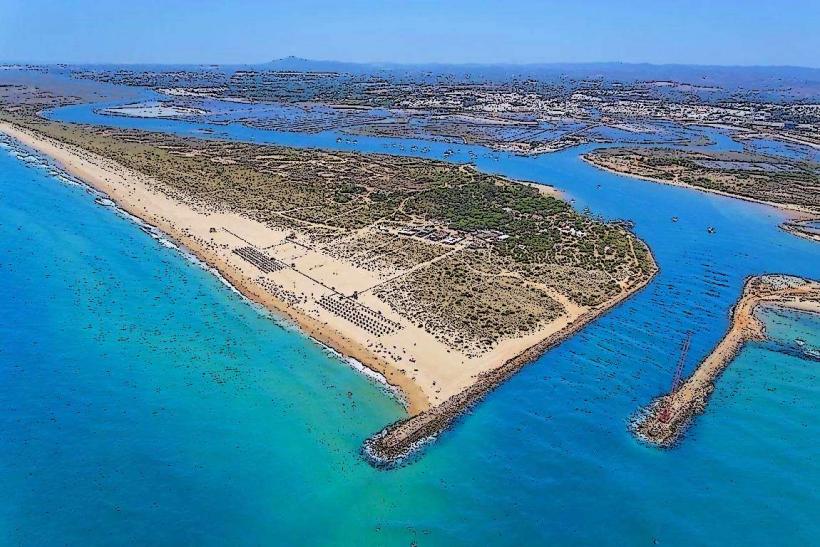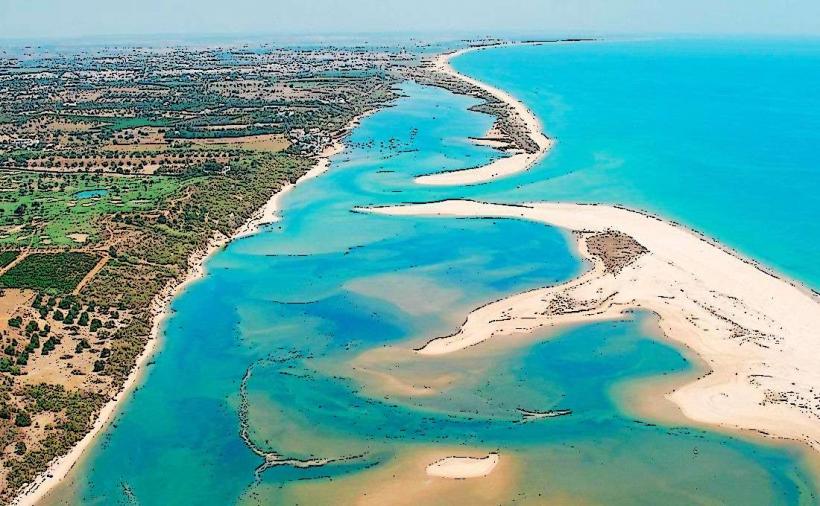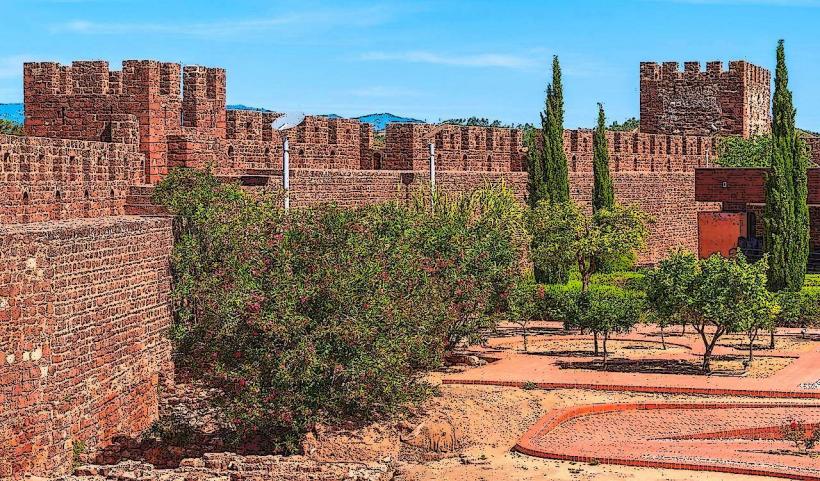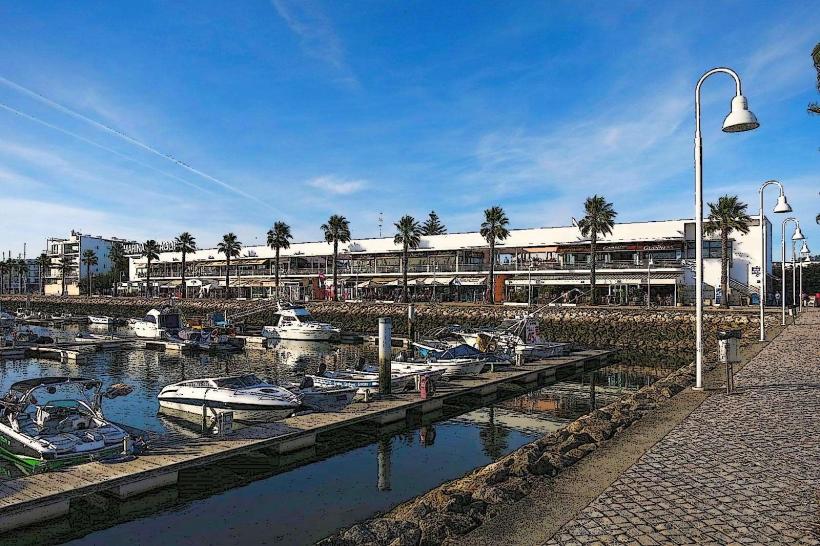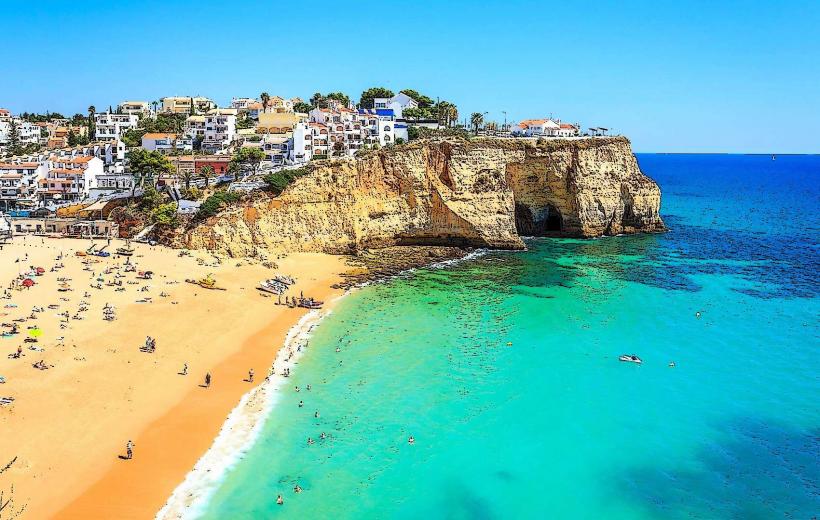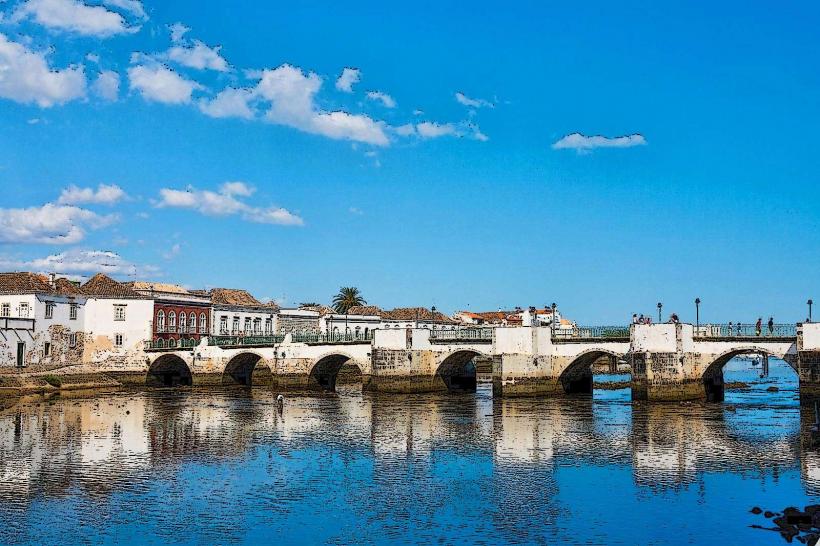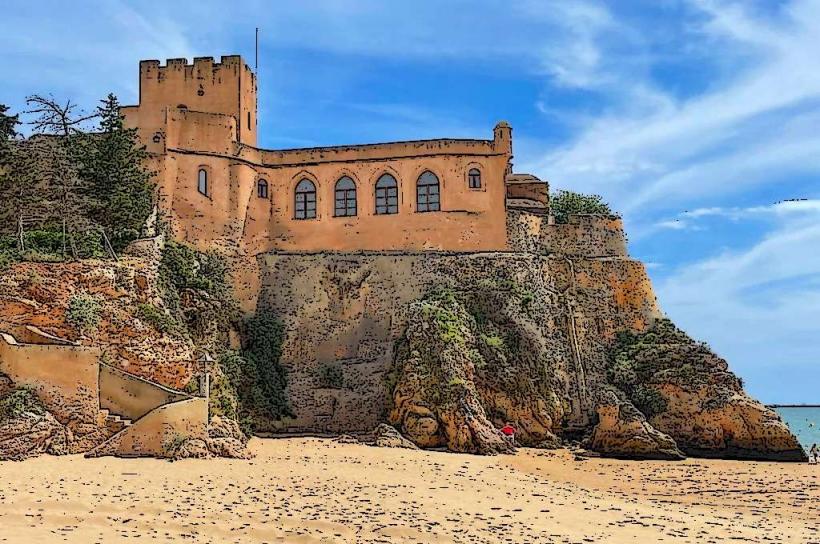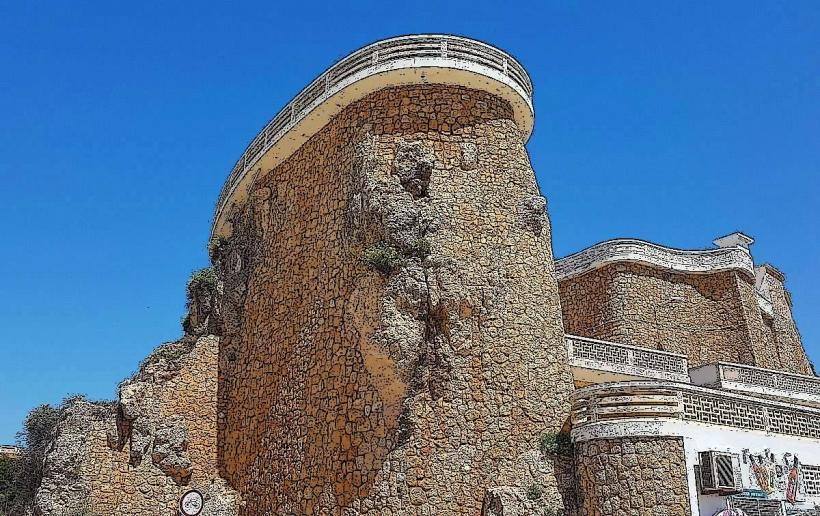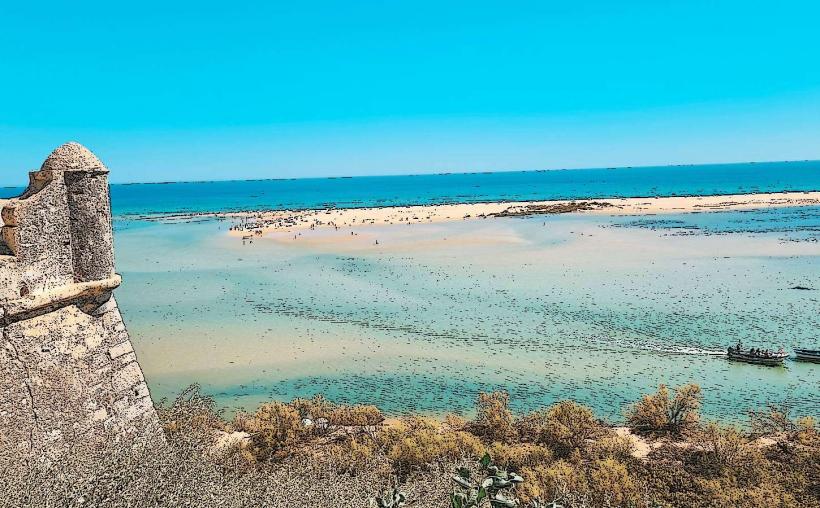Information
Landmark: Alcoutim CastleCity: Algarve
Country: Portugal
Continent: Europe
Alcoutim Castle (Castelo de Alcoutim) is a historic castle located in the town of Alcoutim, in the Algarve region of southern Portugal. Situated along the Guadiana River, which forms the border between Portugal and Spain, this castle offers both scenic views and historical significance. It is an excellent example of medieval military architecture and played a key role in defending the region during various historical conflicts.
1. History and Origins
- Moorish Period: Alcoutim Castle dates back to the Moorish period of the 12th century, when it was originally constructed as a defensive fortification. The region was under Muslim rule at that time, and the castle was part of a network of fortifications built to protect the territory and the river from Christian reconquest attempts.
- Christian Reconquest: Following the Christian Reconquista, the castle was captured by King Afonso III of Portugal in 1242. The castle became a key point in the defense of the newly established Christian kingdom and played an important role in controlling the area along the Guadiana River, which was crucial for trade and military movements.
- Expansion and Use: During the 14th and 15th centuries, the castle underwent various modifications and expansions to strengthen its defenses. The castle was used primarily for military purposes but also served as a symbol of royal power in the region.
- Decline and Abandonment: Like many other Portuguese castles, Alcoutim Castle began to fall into disrepair after the 17th century, as the region became less of a military priority. Today, the castle is a ruin, though some parts of the structure have been preserved.
2. Architecture and Structure
- Walls and Towers: The castle's most prominent features are its masonry walls and defensive towers. The original walls are made of stone, with some sections still visible today. The defensive walls were designed to provide protection from external threats, and the towers offered vantage points for surveillance and defense.
- Main Tower: The main tower, which was used for observation and defense, still stands as the highest point of the castle. This tower offers panoramic views of the surrounding region, including the Guadiana River and the neighboring Spanish landscape. It also serves as a reminder of the castle’s military purpose.
- Castle Gate: The castle’s entrance is protected by a fortified gate, which would have been heavily guarded in times of conflict. While the gate itself is not entirely intact, remnants of its structure can still be seen.
- Walls and Courtyard: The castle's walls form a rectangular shape, enclosing a small courtyard. This space would have been used for various purposes, such as housing soldiers or storing supplies.
3. Current Condition and Preservation
- Restoration Efforts: Though the castle is in a state of ruin, some parts of the structure have been carefully restored. The preservation of the main tower and some sections of the walls allows visitors to get a sense of the castle’s original grandeur. Efforts have been made to maintain the site, and some modern elements have been added to improve visitor access and safety.
- Archaeological Findings: Some archaeological excavations have taken place at the castle site, revealing artifacts from both the Moorish and Christian periods. These findings provide valuable insight into the history of the region and the castle’s role in medieval Portugal.
- Tourism and Visitor Access: The castle is open to the public and has become a popular tourist attraction in the region. Visitors can explore the remains of the castle, enjoy the views from the main tower, and learn about the history of Alcoutim through information panels and guided tours.
4. Visiting Alcoutim Castle
- Location: Alcoutim Castle is situated on a hilltop in the town of Alcoutim, overlooking the Guadiana River. The location offers stunning views of the river and the neighboring Spanish town of Sanlúcar de Guadiana. The castle can be reached by foot from the town center, making it a short walk for those staying in the area.
- Admission: There is usually a small admission fee to enter the castle, with some discounts available for children, seniors, and students. The entrance fee helps support the preservation of the site and its surrounding areas.
- Opening Hours: The castle is typically open year-round, but hours of operation may vary, especially during the off-season. It is recommended to check in advance for specific visiting hours.
- Guided Tours: While the castle is generally self-guided, there may be guided tours available, offering more in-depth knowledge about the history and significance of the castle. Guides can explain the military strategies employed during its use and the role it played in the region’s history.
- Access and Facilities: There are no significant amenities within the castle itself, but there are cafes, restaurants, and other facilities in the town of Alcoutim where visitors can relax after exploring the site.
5. Nearby Attractions
- Guadiana River: The Guadiana River, which forms the border between Portugal and Spain, flows near Alcoutim Castle. Visitors can enjoy a boat ride on the river, taking in the stunning scenery of the riverbanks and the surrounding hills. The river is home to diverse wildlife and provides a peaceful setting for a day out.
- Alcoutim Village: The village of Alcoutim is charming and quaint, with cobbled streets, traditional whitewashed houses, and a peaceful atmosphere. The town offers a number of local shops, cafes, and restaurants where visitors can enjoy authentic Portuguese food.
- Alcoutim River Beach: Located by the river, the Alcoutim River Beach is a popular spot for relaxation and swimming. It offers beautiful views of the river and the Spanish town of Sanlúcar de Guadiana on the opposite bank.
- Roman Bridge of Alcoutim: The town also features a Roman bridge that dates back to antiquity. Though it has been rebuilt, it remains a significant landmark in the town and provides a glimpse into the region’s historical infrastructure.
- Cacela Velha: A short drive from Alcoutim, Cacela Velha is a picturesque village with a beautiful beach and historical architecture. The village is known for its fortified church, which offers great views of the coastline.
6. Best Time to Visit
- Spring and Autumn: The best time to visit Alcoutim Castle is during the spring (March to May) and autumn (September to November) when the weather is mild, and the area is less crowded. The surrounding countryside is lush, and the temperatures are comfortable for exploring the site.
- Summer: Summer (June to August) can be very hot in the Algarve, but it is also a popular time for visitors, especially those enjoying the local beaches. Early morning or late afternoon visits are ideal for avoiding the heat.
- Winter: Winter (December to February) is quieter, with cooler temperatures. While the weather can be a bit chilly, it is still a good time for those looking to avoid the summer crowds.
7. Conclusion
The Alcoutim Castle is a must-visit destination for those interested in history, architecture, and beautiful views of the Algarve region. The castle offers a peaceful and scenic spot to explore the history of medieval Portugal, from the Moorish period to the Christian Reconquest. Whether you're interested in military history, photography, or simply enjoying the beautiful landscape of the Guadiana River, Alcoutim Castle provides a memorable experience for visitors.

